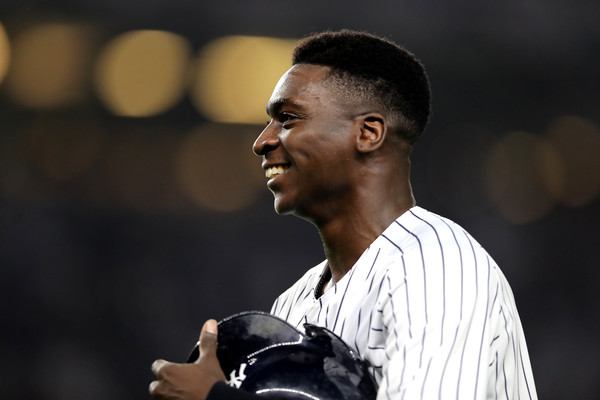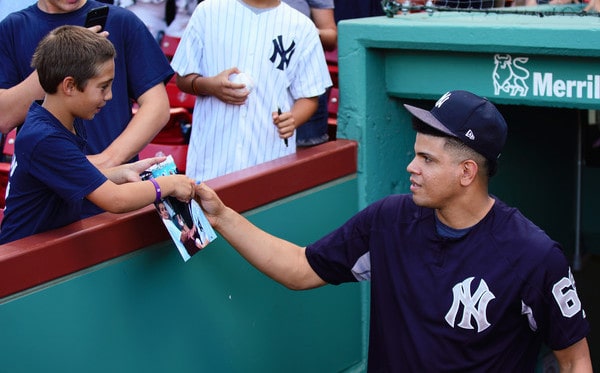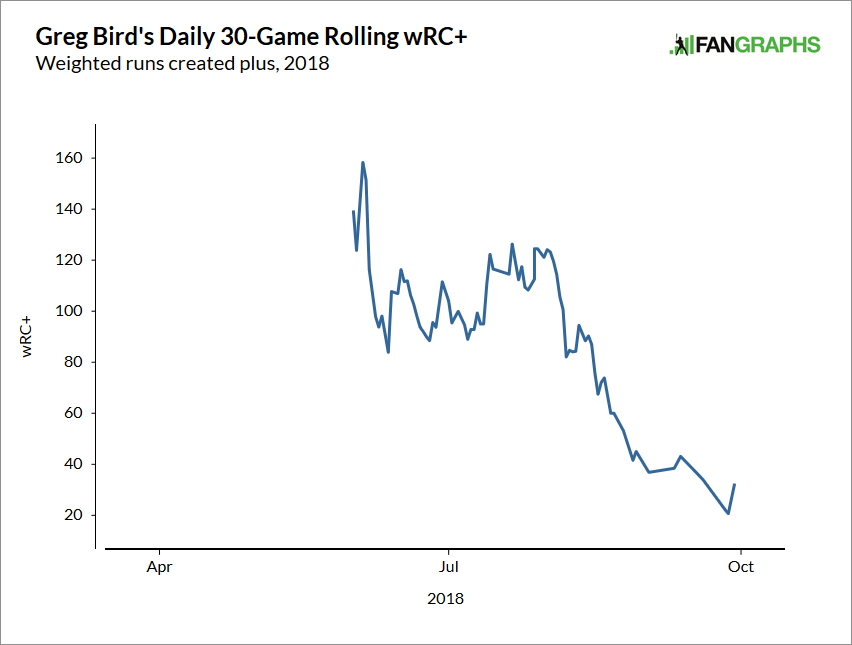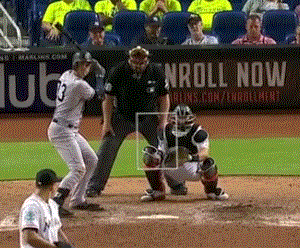
In 2016, Didi Gregorius set career-best marks in runs, home runs, RBI, strikeout rate, and wRC+. In 2017, he once again set new high water marks in those metrics, to go along with a career-high 4.0 fWAR. And this time last year we were all wondering what he was capable of for an encore.
As a reminder, here is what the projection systems had to say:
- Steamer: .269/.314/.436, 20 HR, 5.3% BB, 13.4% K, 566 PA
- ZiPS: .267/.306/.430, 20 HR, 4.7% BB, 13.5% K, 593 PA
- PECOTA: .262/.312/.411, 18 HR, 5.8% BB, 14.7% K, 636 PA
All three systems predicted a bit of regression for Gregorius, essentially predicting a return to his (still good) 2016 form. And, while that would have been disappointing, I’m sure that most of us would have accepted a solid defensive shortstop with a league-average bat. That’s not what happened, though.
The Ridiculously Hot Start
Gregorius reached base safely in his first five games, by the end of which he was slashing .444/.524/1.111 with two home runs and nine RBI. He also drew three walks in those five games, which might just be the most impressive aspect of that stretch. Well, that or his 8 RBI game against the Rays on April 3:
Unfortunately…
A Ridiculously Awful May
Gregorius was as bad in May as he was good in April; and that might be underselling his badness. His slash line was .149/.184/.213, which is good for a -1 wRC+. He stopped walking and hitting for power, and he looked helpless at the plate more often than not. Gregorius’ batted ball profile shows a clear change in contact, too:

His line-drive rate tumbled, his groundball spiked, and flyballs stopped leaving the yard. His HR/FB rate can be attributed to a simple yet aggressive bit of bad luck and/or regression to the mean – but the quality of contact was clearly not there. And at the end of May he was hitting .240/.315/.479, which isn’t all that far removed from his 2017 line of .287/.318/.478 (with way more power and walks).
The Return to Form
Gregorius closed out May with a little hot streak, reaching base in four straight games via five singles, a walk, and an HBP. And from June 1 through August 19 he raked once more, batting .292/.347/.485 with 11 HR, 7.3% walks, and 11.4% strikeouts (124 wRC+) in 289 PA. His batted ball profile basically split the difference between April and May, to the tune of 21.3% line drives, 40.9% grounders, 37.8% flyballs, and 12.6% HR/FB. That’s basically his career norms, with the exception of the still-elevated HR/FB rate, so it wasn’t difficult to say that this was probably who Gregorius is at this point.
Why the arbitrary cut-off of August 19, you ask? Well, with the news of his impending Tommy John surgery you may have forgotten that he missed nearly three weeks with a heel injury:
All told, Gregorius hit .268/.335/.494 (121 wRC+) with 27 HR and 4.6 fWAR. If you’re keeping score at home, he once again set career-bests in runs, home runs, strikeout rate, wRC+, and fWAR, as well walks, OBP, and SLG. By FanGraphs’ reckoning he was the 8th best shortstop in the game, between Trea Turner and Jean Segura. That’s not too shabby.
The Doubly Dreadful Playoffs
Gregorius, like many Yankees, didn’t do so well in the postseason. He hit .234/.222/.294 in 19 PA, and didn’t draw a walk in five games. He was a big part of the failed comeback in the final game of the team’s season, though, hitting a single in the bottom of the 9th to give the team two on and none out. It was a disappointing ending to a brilliant season.
Of course, that wasn’t quite the end, was it? As I mentioned above, shortly after the Yankees bowed out of the playoffs we found out that Gregorius would undergo Tommy John surgery, which has an unclear recovery period. Jay Jaffe of FanGraphs found that infielders that had TJS on their throwing arms have taken anywhere from 6 to 15 months to return to the field; and one player, T.J. Rivera, hasn’t returned since having the procedure in September of last year. The mean is right around 10 months, which would put Gregorius on-track to return sometime in August. Which is … less than ideal.
What’s Next?
Of all of the players that we’re slated to review, Gregorius might be the most difficult to think about going forward.
The soon-to-be 29-year-old is a free agent after next season, and he currently lacks a timetable for return. The Yankees anticipate a return in 2019, and there are rumblings that they expect him to play the majority of the season. That seems aggressive, given what we know – but they know way more about the severity of the tear than we do, so it wouldn’t be out of the question that he could be on an expedited recovery plan. And if he could return before the midpoint of the season (say, sometime in June), it might be worth discussing short-term replacements – a return engagement with Neil Walker or signing a similarly versatile utility player (while moving Gleyber Torres to short), perhaps? – as opposed to acting as though the sky is falling.
If, however, the Yankees expect him back in August, it might be worth pursuing another full-time option in the infield. They have a ready-made replacement at short in Torres, which is great because it broadens their pool for replacements. But counting on a core player to return for 50 or so games and immediately return to form for a contending team feels irresponsible. And then there’s also the fact that he’s slated to earn over $12 MM through arbitration next year, which is a hefty figure for someone that might play less than a third of the season; a non-tender or contract extension buying out this year and a year or two of free agency might be in the cards in that case. These are not the issues that I was hoping to tackle in this review at all – but here we are.
On the none doom-and-gloom side of the equation, I do think it’s safe to say that the Gregorius of 2017 and 2018 is the real deal. So there’s that.




